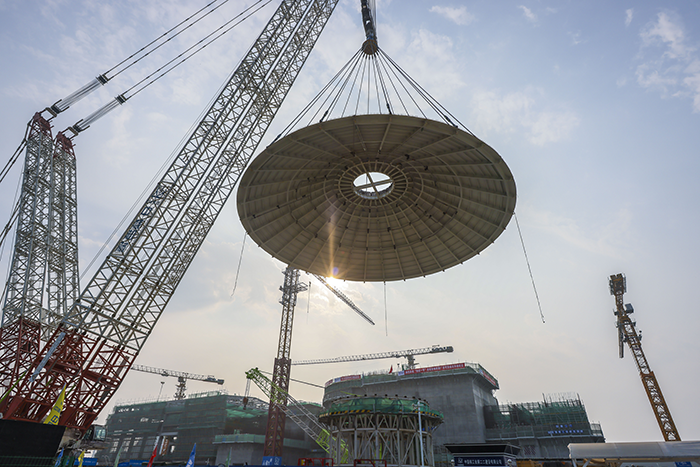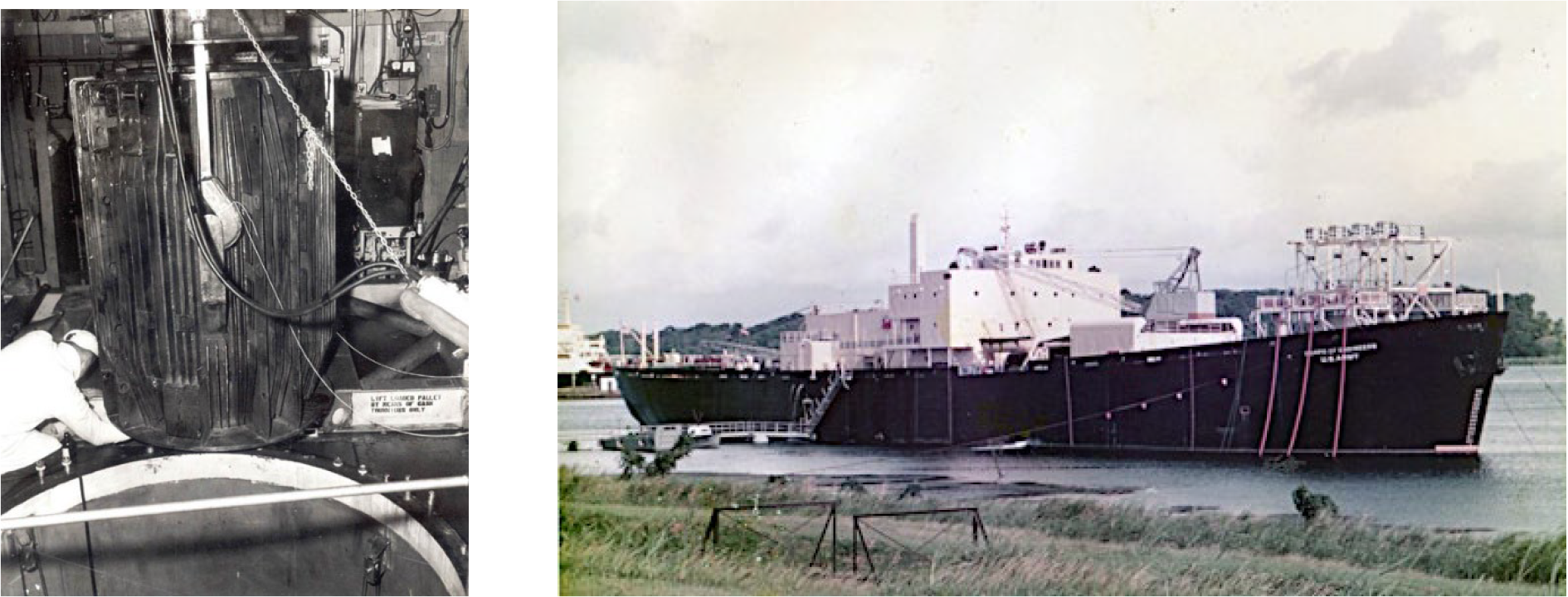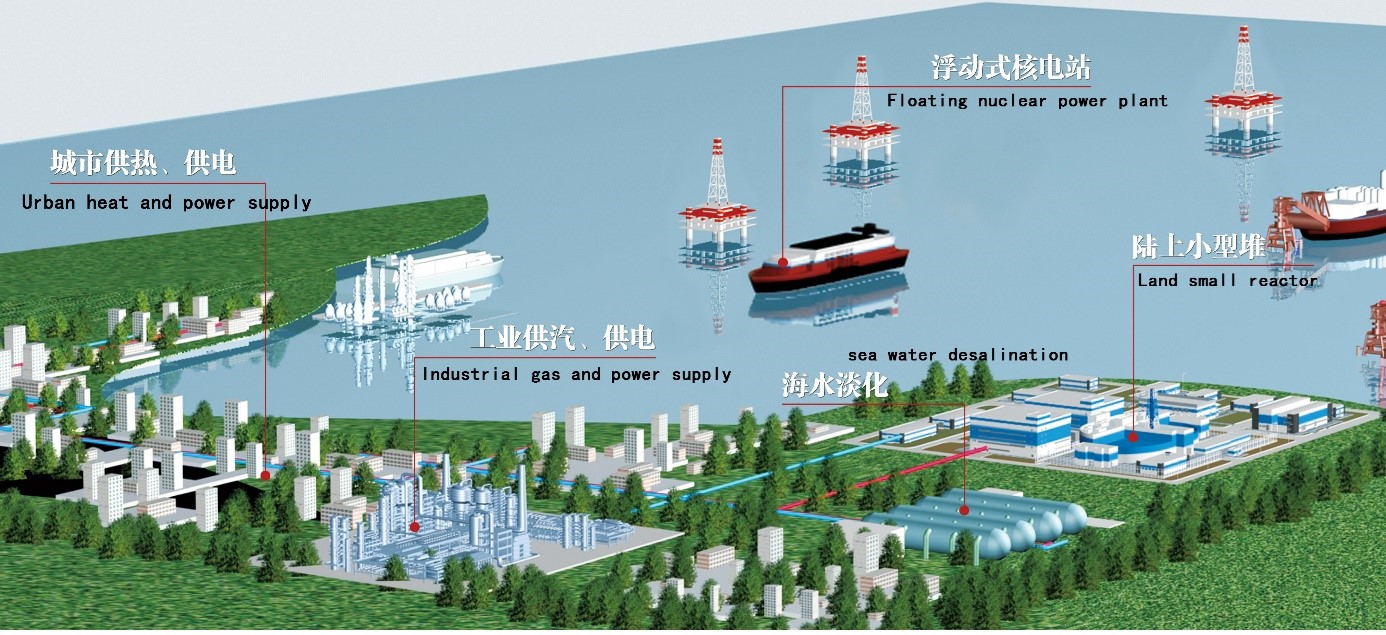Analyses / Energy and Raw Materials
18 March 2024
Europe’s Quest for “Small Modular Nuclear Reactors”

On February 6, 2024, the European Commission launched the SMR Alliance[1], marking a step toward equipping Europe with these small, mobile nuclear reactors capable of meeting local energy needs. At first glance, this announcement might seem surprising, given that even mentioning nuclear power often exacerbates intra-European divisions. However, it appears that SMRs are an exception.
When people talk about small modular reactors, the focus often shifts to their size, sparking visions of a future where small uranium-powered batteries could be loaded onto vehicles. In reality, this miniaturization is neither an innovation nor the promised revolution. These reactors have existed for a long time and are, in fact, as old as the nuclear industry itself.

On the left, the PM-3A reactor, nicknamed “Nuckey-Poo,” deployed in Antarctica from 1962 to 1972. On the right, the MH-1A Sturgis, a floating nuclear reactor active from 1968 to 1976 near the Panama Canal. These are two examples of miniaturized nuclear reactors used as early as the 1960s.
The true innovation of SMRs lies in their modularity: a design based on an integrated and standardized block that can be mass-produced and deployed quickly at a much lower cost than current reactors.

Comparison between a loop reactor similar to the models used in EDF’s pressurized water reactors and an SMR based on a similar concept. Source: EDF.
For the nuclear industry, this is a considerable, if not revolutionary, opportunity. Building a nuclear power plant remains a multi-billion euro challenge that takes years, even decades. It’s a lengthy process, during which the risk of changes in state policy or public opposition to the project increases. However, thanks to SMRs, it is theoretically possible to deploy and make a reactor profitable in record time, to produce electricity or heat for cities, factories, and even hydrogen or drinking water production.
SMRs would thus not only boost the nuclear energy supply but also diversify it towards other needs and actors, possibly less skeptical of nuclear power. This could be particularly relevant in developing countries, which see it as an affordable option to electrify, decarbonize, and better integrate their territories.
For the European Union, the minimal risk posed by these low-power reactors with limited fuel consumption seems to have convinced policymakers, as evidenced by the “Net Zero Industry Act,” which designates SMRs as net-zero technologies, or the SMR alliance, which could mark the beginning of a shared effort.
However, despite these political advances, Europe lags considerably behind. While the United States, China, Russia, Japan, and even Argentina already have advanced or even operational models, Europe has no projects that could become operational before the end of the decade. Not only has the EU been slow to develop these technologies, but it continues to progress in a fragmented manner with a multitude of parallel projects.
The economic risk is, of course, significant, as this inherently small market will leave little room for new entrants. Furthermore, this technology, which is supposedly modest in capacity, has significant geostrategic potential.
In China, two prototypes designed for the development of coastal and isolated areas could easily be deployed on contested islands in the South China Sea, making them impenetrable to any attacker with even a basic regard for nuclear safety principles.

The ACP100S SMR, a 125 MW electrical reactor, specifically designed by CNNC [2] and NPIC [3] for deployment in coastal areas or isolated islands.
On the Russian side, a similar use can easily be anticipated to secure the annexed territories in Eastern Ukraine and empower occupying forces. As for the United States, where the dual nature of SMRs is accepted, the Department of Defense is already financing projects with military purposes. The potential impact this technology could have on the strategic field is therefore far from negligible.
That said, it is important to put things into perspective. While anything is possible in a laboratory, the industrialization of such a complex technology remains a step that is often difficult to overcome. Whether from a technical, logistical, or economic point of view, the feasibility of SMRs remains uncertain. Not to mention social and political acceptance, which is often overlooked but crucial to the success of any innovation, no matter how “revolutionary” it may seem.
Finally, we must not close the door on ecological debate. While these reactors may indeed be a solution for decarbonization, they remain yet another approach aimed at boosting an ever-growing energy supply, thereby sustaining an equally disproportionate and unrestrained energy demand, which should certainly give us pause for thought.
————————————————-
[1] Small Modular Reactor
[2] China National Nuclear Corporation
[3] Nuclear Power Institute of China

